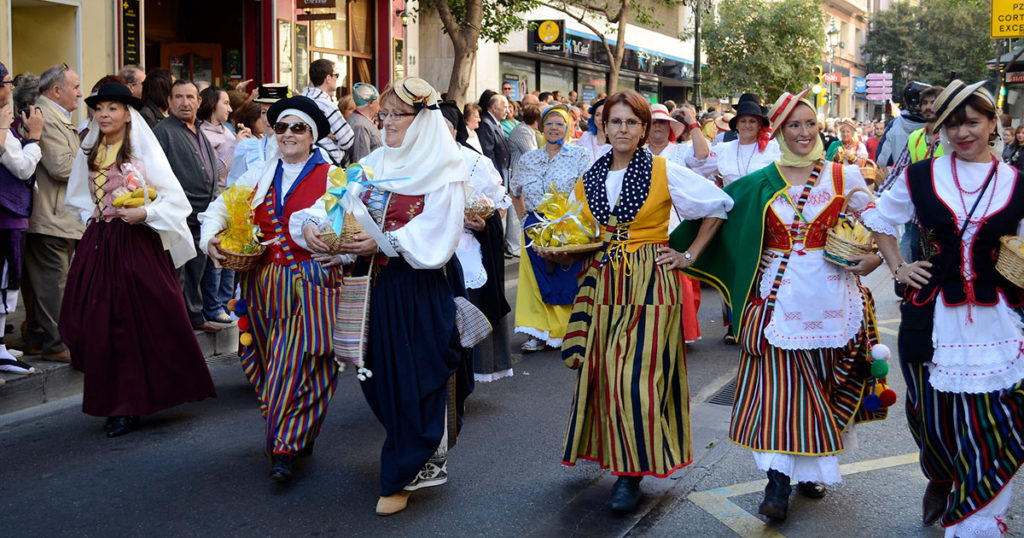
A small red car was parked in front of the recycling bins on a Tuesday evening when my mother and I walked down with our bags of plastics and paper. Estoy de fiesta was inscribed in white letters at a jaunty slant on the car’s rear fender. Below that was the word anamación and a telephone number. “What does estoy de fiesta mean?” asked my mother.
The day before we had driven half an hour down the road to a town in the mountains called Incós, where, as part of the village fiestas, a foot race to the top of the mountain Pico Incós is held every year. Typically, village fiestas last a few days, and most villages have one. You can practically spend the summer going from one village fiesta to the next. Because of the race, this was one I usually went to. We got there early, around 4 p.m., and saw the arrival of two semis that would be converted into sound stages for the bands that the town had hired. The semis barely fit through the opening in the stone wall into the prau de fiesta, the big field designated for the celebration, and, once through, required the aid of a farm tractor to get up the slope leading to the festival tent. A bouncy castle for children was already inflated, and a vender’s wagon with toys and sweets sat beside it. Facing the stages was the open tent with a bar against the back and rows of long tables and chairs filling half the space. People began to trickle in, the field filled with parked cars, and the street with spectators, and then the runners. It was almost 10 p.m. when we left, after the race and the awards ceremony, but before the tables filled or the bands had struck up and the fun got underway. What do you do, actually? Eat, drink, and make merry to the tunes of the band. “Estoy de fiesta means ‘I’m partying,’” I told my mother.
Cities as well as villages have their patron saint and their fiestas. The día del Pilar, named for the Virgen del Pilar, is a national holiday on the 12th of October. The holiday, officially designated Día de la Hispanidad, celebrates Columbus’s arrival in the New World, and among the cities and towns holding fiestas del Pilar is Zaragoza, the fifth-largest city in Spain and the center of the autonomous region of Aragón. The fiestas: nine days of fun with an offering of flowers to the Virgin del Pilar, the nighttime Glass Rosary parade of illuminated glass parade floats, the Giants and Big Heads parade, an offering of fruits, puppet shows, a funfair, several solemn masses, and all the attendant gastronomic excesses of a party. I’ve never been much of a partygoer, but Zaragoza for the fiestas del Pilar would have been a fine place to have taken my mother for a taste of the celebration, had we been anywhere close and had the energy.
For people lacking that energy, there are animadores, whose work is animación. Animación was the next word on the car fender. As I explained to my mother, it is what the person in charge of entertainment, the animador, does, typically at a party or event for children. My mother’s face did not indicate enlightenment. I went on. “Something of a master-of-ceremonies or an entertainer, maybe a clown or a magician, a kind of cheerleader, someone to get groups of people excited about an organized activity.” I was floundering. “You know, when you get kids to call out responses just to get in the mood. To participate. At events.” It did seem silly as I tried to explain the job. Especially in Spain, with fields full of people returning to their ancestral villages to celebrate and hordes of people packing city streets to watch parades or offer flowers or eat the delectable regional specialties. They’d be laughing, they’d be waving, they’d be calling back and forth. Spaniards needing animating? What an idea!

